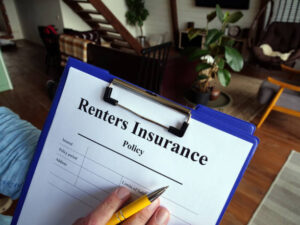Introduction
Home insurance is a critical aspect of financial planning that provides homeowners with peace of mind and protection against unexpected events. With the increasing frequency of natural disasters and other unforeseen circumstances, understanding home insurance coverage options is more important than ever. This comprehensive guide delves into the various types of home insurance, the benefits they offer, and how to choose the best coverage for your needs.

What is Home Insurance?
Home insurance, also known as homeowner’s insurance, is a policy that provides financial protection against losses and damages to an individual’s home and assets within the home. It typically covers interior damage, exterior damage, loss or damage of personal assets, and injury that occurs on the property.
Importance of Home Insurance
Home insurance is crucial for several reasons. It safeguards one of your most significant investments—your home. It also provides liability protection against accidents that occur on your property, helping to cover medical expenses and legal fees if necessary. Furthermore, it ensures that you are not financially devastated by natural disasters, theft, or other incidents that could result in significant property damage or loss.
Types of Home Insurance Policies
HO-1: Basic Form
The HO-1 policy, also known as the Basic Form, offers limited coverage and is the most straightforward type of home insurance. It typically covers specific perils such as fire, lightning, windstorm, hail, explosion, riots, and theft.
HO-2: Broad Form
The HO-2 policy, or Broad Form, extends the coverage of the HO-1 policy. It covers a broader range of perils, including damage from falling objects, the weight of ice or snow, and accidental discharge of water from plumbing.
HO-3: Special Form
The HO-3 policy, or Special Form, is the most commonly purchased homeowner’s insurance. It provides coverage for all perils except those specifically excluded in the policy. This type of insurance offers comprehensive protection for the structure of your home and personal property.
HO-4: Tenant’s Form
The HO-4 policy, also known as Renters Insurance, is designed for those who rent their homes. It covers personal property and liability but does not cover the physical building.
HO-5: Comprehensive Form
The HO-5 policy provides the most extensive coverage. It includes all perils covered under the HO-3 policy, with additional coverage for personal property. It also offers higher coverage limits and fewer exclusions.
HO-6: Condominium Form
The HO-6 policy, or Condominium Insurance, is tailored for condo owners. It provides coverage for personal property, liability, and specific parts of the condo’s structure that the condo owner is responsible for, such as interior walls and floors.
HO-7: Mobile Home Form
The HO-7 policy is similar to the HO-3 but is specifically designed for mobile or manufactured homes. It offers coverage for the structure, personal property, and liability.
HO-8: Older Home Form
The HO-8 policy, or Modified Coverage Form, is designed for older homes where the cost to replace the home exceeds the market value. It provides similar coverage to the HO-3 but takes into account the unique needs of older homes.
Key Components of Home Insurance Policies
Dwelling Coverage
Dwelling coverage protects the physical structure of your home, including the walls, roof, and foundation, against covered perils.
Other Structures Coverage
This covers other buildings on your property, such as a detached garage, shed, or fence.
Personal Property Coverage
Personal property coverage protects your personal belongings, such as furniture, clothing, and electronics, from covered perils.
Liability Coverage
Liability coverage protects you from financial loss if you are found legally responsible for someone else’s injury or property damage.
Additional Living Expenses (ALE)
ALE covers the cost of living elsewhere while your home is being repaired or rebuilt after a covered loss.
Medical Payments Coverage
This provides coverage for medical expenses if a guest is injured on your property, regardless of fault.
Factors Affecting Home Insurance Rates
Location
The location of your home significantly impacts your insurance rates. Homes in areas prone to natural disasters or with high crime rates may have higher premiums.
Home Value and Construction
The replacement cost of your home and the materials used in its construction can affect your insurance rates. Homes with higher replacement costs or those made with expensive materials will generally have higher premiums.
Coverage Amount
The amount of coverage you choose directly influences your insurance rates. Higher coverage limits typically result in higher premiums.
Deductibles
The deductible is the amount you pay out of pocket before your insurance kicks in. Choosing a higher deductible can lower your premiums but increase your out-of-pocket costs in the event of a claim.
Claims History
Your claims history can affect your insurance rates. Frequent claims or a history of significant claims may result in higher premiums.

Additional Coverage Options
Flood Insurance
Standard home insurance policies typically do not cover flood damage. Flood insurance is a separate policy that covers damage caused by flooding.
Earthquake Insurance
Earthquake insurance is another add-on that covers damage resulting from earthquakes. It is essential for homes in earthquake-prone areas.
Sewer Backup Coverage
This coverage protects against damage caused by a backup of water or sewage into your home.
Identity Theft Coverage
Identity theft coverage helps cover the cost of restoring your identity if you become a victim of identity theft.
Umbrella Insurance
Umbrella insurance provides additional liability coverage beyond the limits of your home insurance policy, offering extra protection against major claims and lawsuits.
How to Choose the Right Home Insurance
Assess Your Needs
Evaluate your home’s value, the value of your personal property, and the specific risks associated with your location to determine your coverage needs.
Compare Quotes
Obtain quotes from multiple insurance providers to compare coverage options and rates. Ensure you are comparing similar policies to get an accurate comparison.
Read the Fine Print
Carefully read the policy details, including exclusions and limitations, to understand what is and isn’t covered.
Consider Bundling
Many insurance companies offer discounts for bundling multiple policies, such as home and auto insurance. Bundling can save you money and simplify your insurance management.
Review Customer Service
Choose an insurance provider with a good reputation for customer service. Read reviews and ask for recommendations to ensure you select a company that will be responsive and helpful in the event of a claim.
Filing a Home Insurance Claim
Document the Damage
Take photos and videos of the damage as soon as it occurs. This documentation will be crucial when filing your claim.
Contact Your Insurance Company
Notify your insurance company of the damage as soon as possible. They will guide you through the claims process and provide necessary forms and instructions.
Make Temporary Repairs
If possible, make temporary repairs to prevent further damage. Keep receipts for any expenses incurred, as they may be reimbursed by your insurance.
Prepare for the Adjuster
An insurance adjuster will visit your home to assess the damage. Provide them with all necessary documentation and be prepared to answer questions about the damage.
Keep Detailed Records
Maintain a detailed record of all communication with your insurance company, including dates, times, and the names of representatives you speak with. This can help resolve any disputes or misunderstandings during the claims process.

Tips for Lowering Home Insurance Premiums
Increase Your Deductible
Opting for a higher deductible can lower your insurance premiums. Just ensure you have enough savings to cover the deductible in case of a claim.
Improve Home Security
Installing security systems, smoke detectors, and deadbolt locks can reduce your insurance premiums by making your home safer and less susceptible to theft and damage.
Maintain Good Credit
Insurance companies often consider your credit score when determining your premiums. Maintaining good credit can help you secure lower rates.
Disaster-Proof Your Home
Taking steps to disaster-proof your home, such as reinforcing your roof or installing storm shutters, can lower your insurance premiums by reducing the risk of damage.
Review and Update Your Policy Regularly
Regularly review your policy to ensure you have adequate coverage and to make any necessary updates. This can help you avoid overpaying for coverage you don’t need or being underinsured.
Common Misconceptions About Home Insurance
Myth 1: Home Insurance Covers All Types of Damage
Home insurance does not cover all types of damage. Floods, earthquakes, and routine wear and tear are typically not covered under standard policies.
Myth 2: Home Insurance Is Not Necessary for Renters
While renters don’t need insurance for the building, they do need coverage for their personal property and liability, which renters insurance (HO-4) provides.
Myth 3: Home Insurance Premiums Are Set in Stone
Home insurance premiums can vary based on several factors, and there are ways to lower them, such as increasing your deductible or improving home security.
Myth 4: Personal Belongings Are Fully Covered
Most home insurance policies have limits on coverage for high-value items like jewelry, electronics, and artwork. Additional coverage may be needed for these items.
Conclusion
Home insurance is a vital component of protecting your home and financial well-being. Understanding the different types of home insurance policies, their coverage options, and the factors that affect premiums can help you make informed decisions about your coverage. Regularly reviewing and updating your policy ensures that you maintain adequate protection for your home and belongings. By taking proactive steps to secure the right insurance, you can enjoy peace of mind knowing that you are prepared for whatever comes your way.



